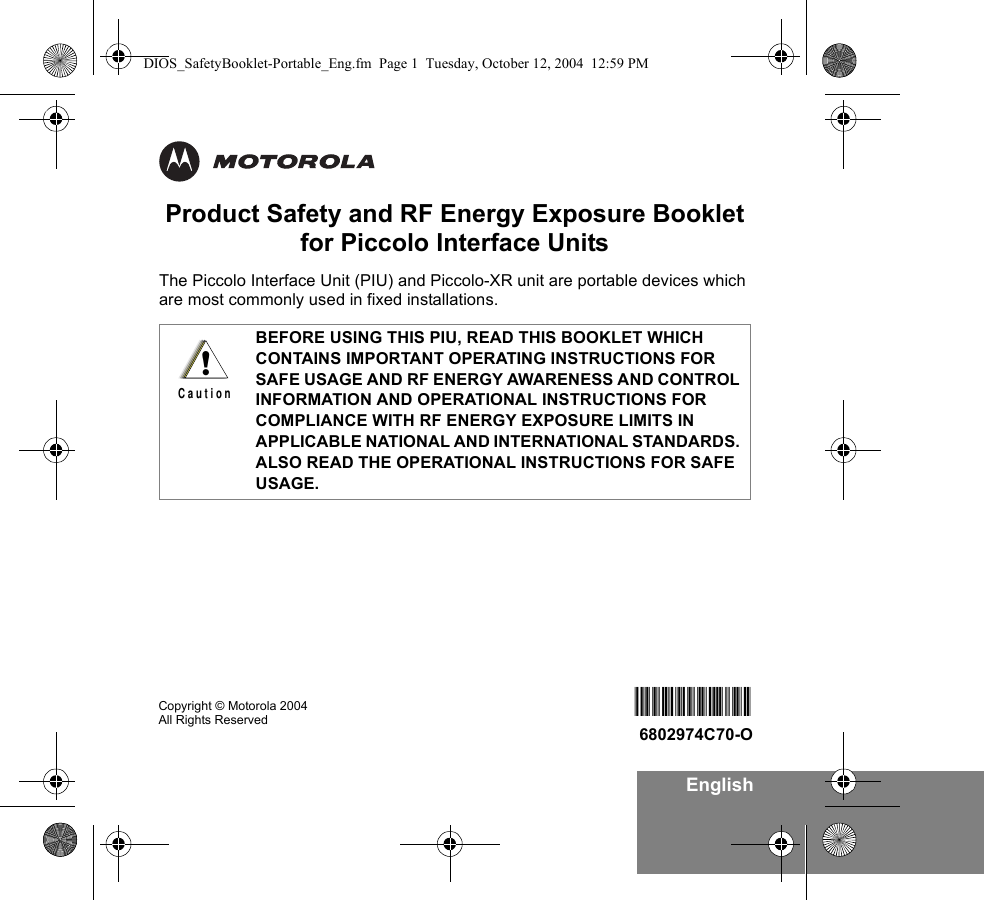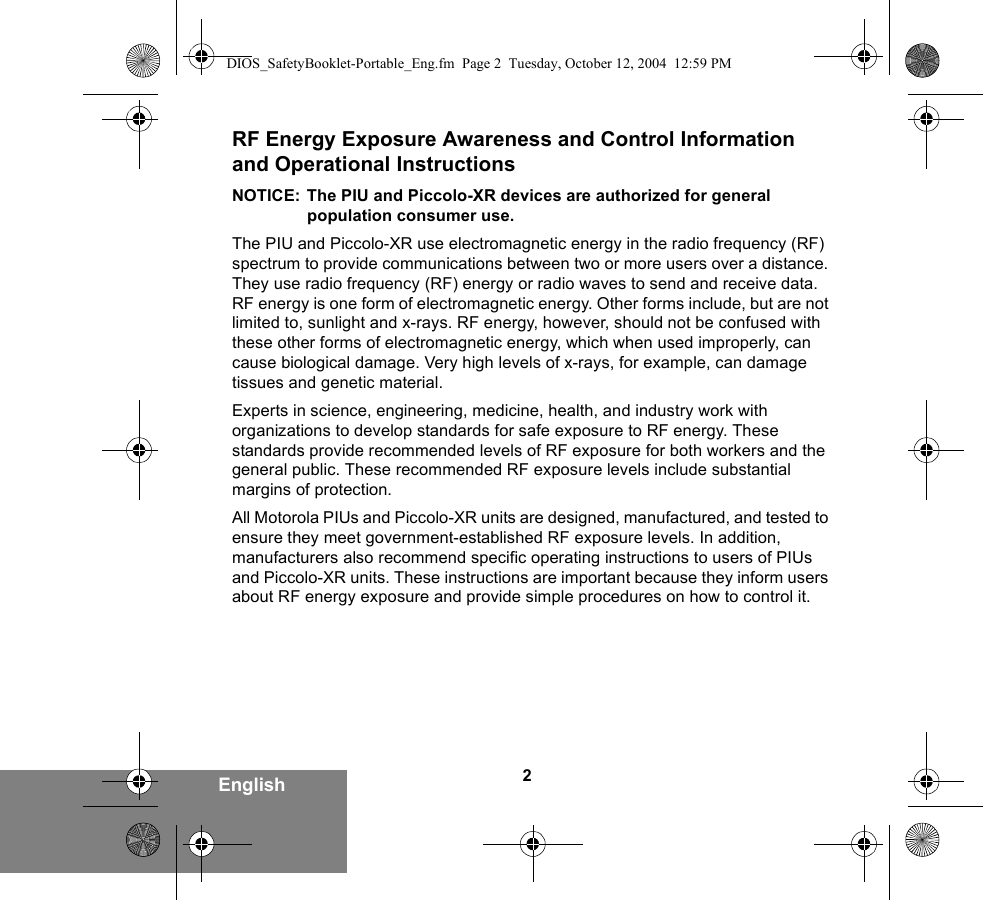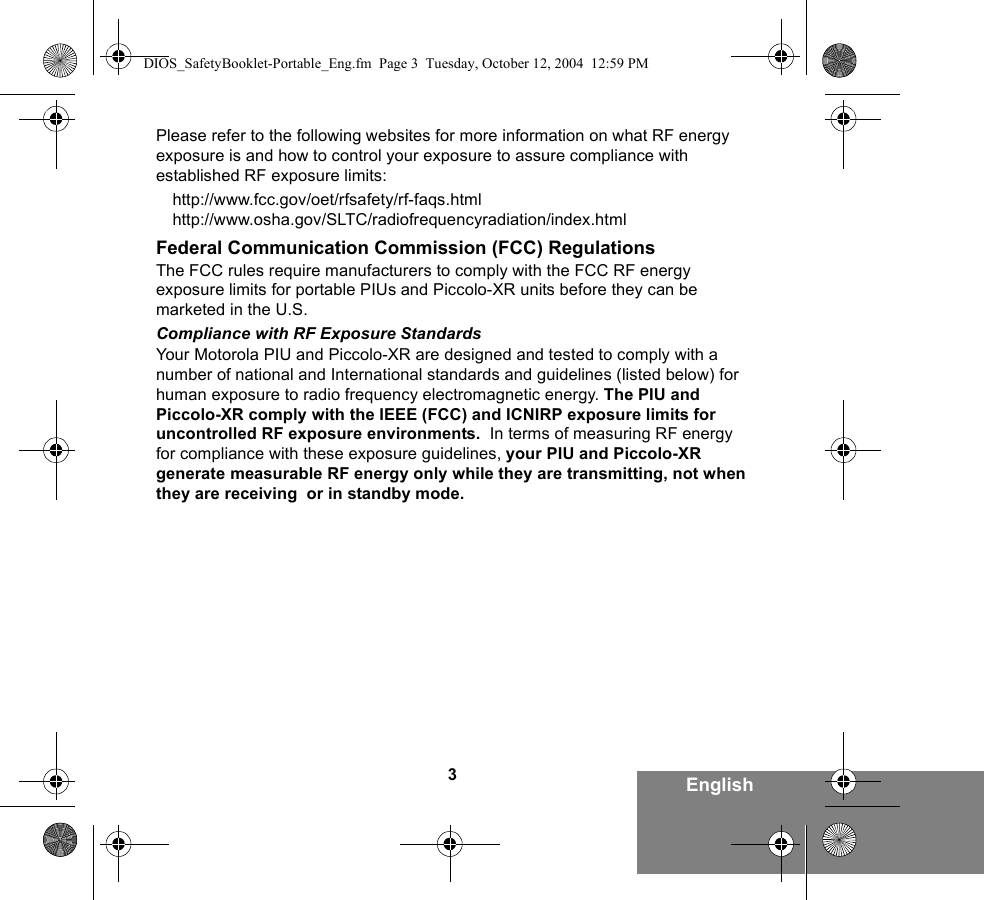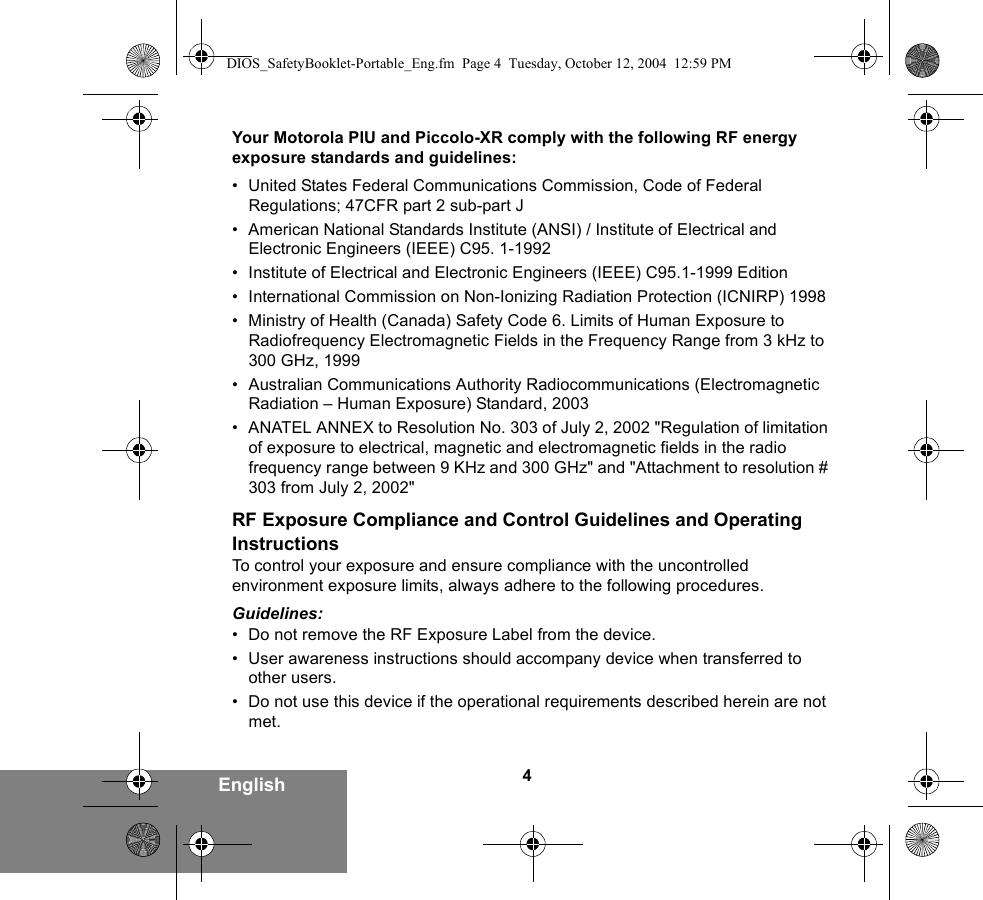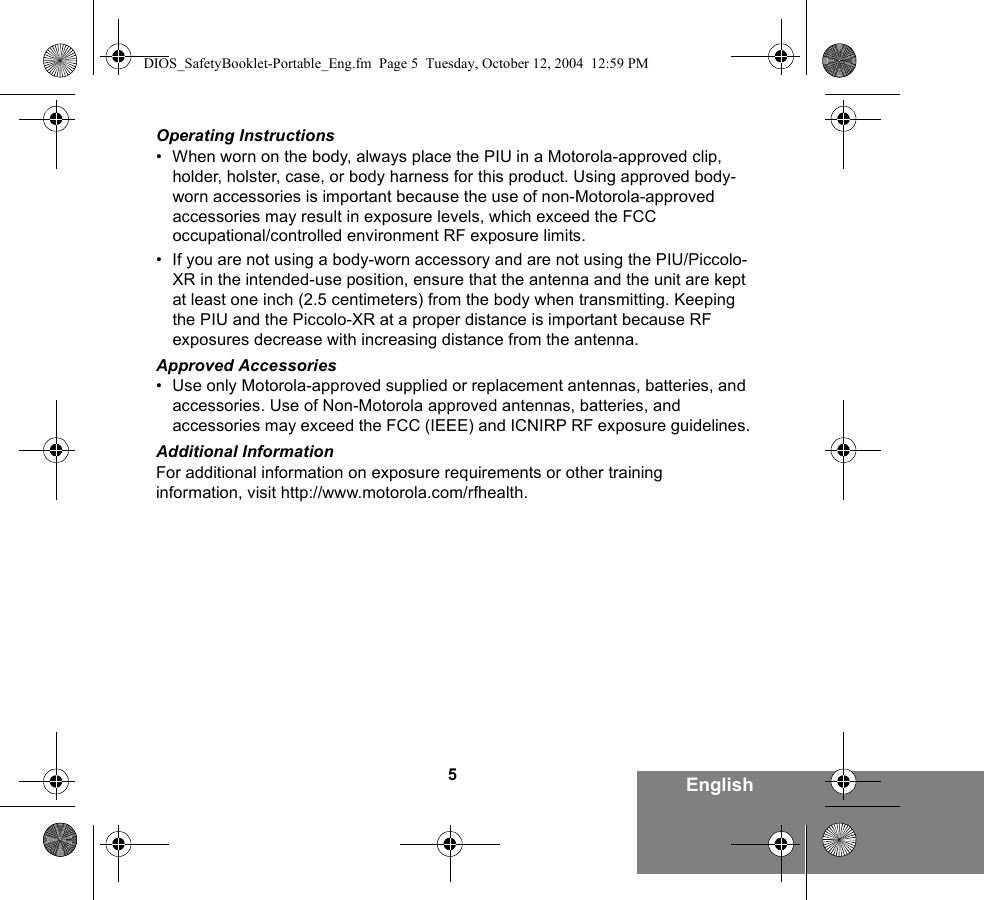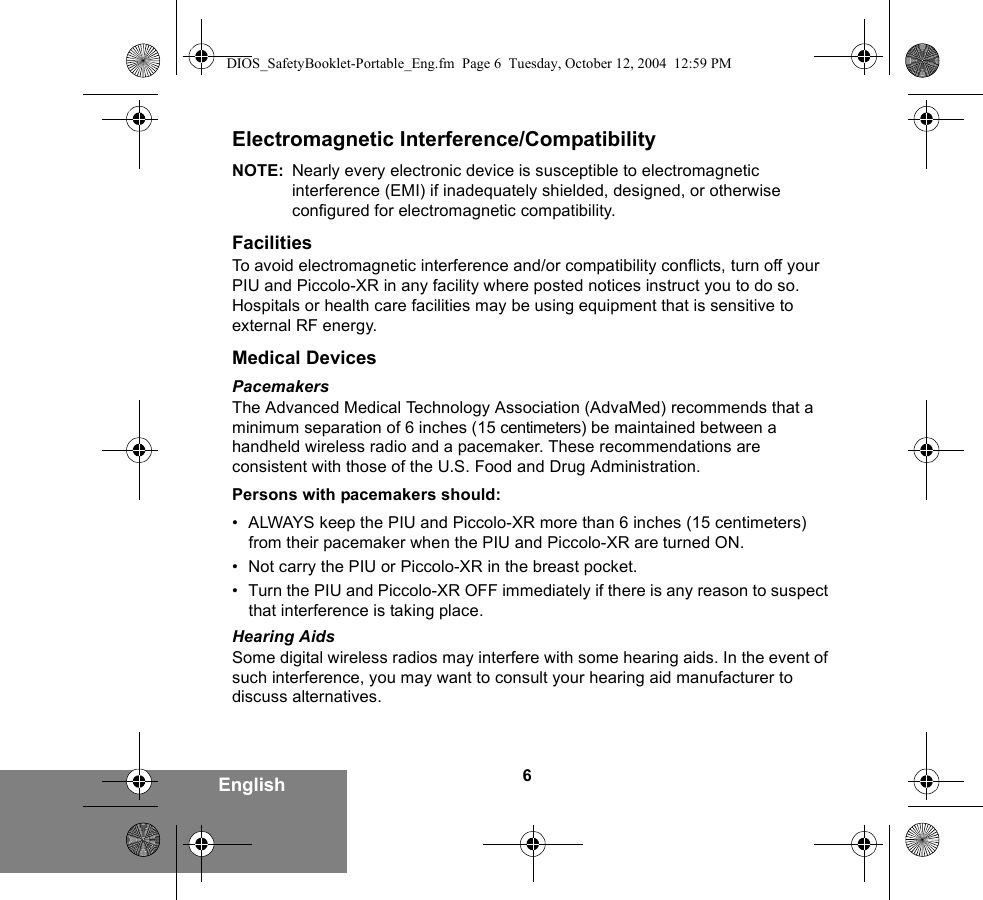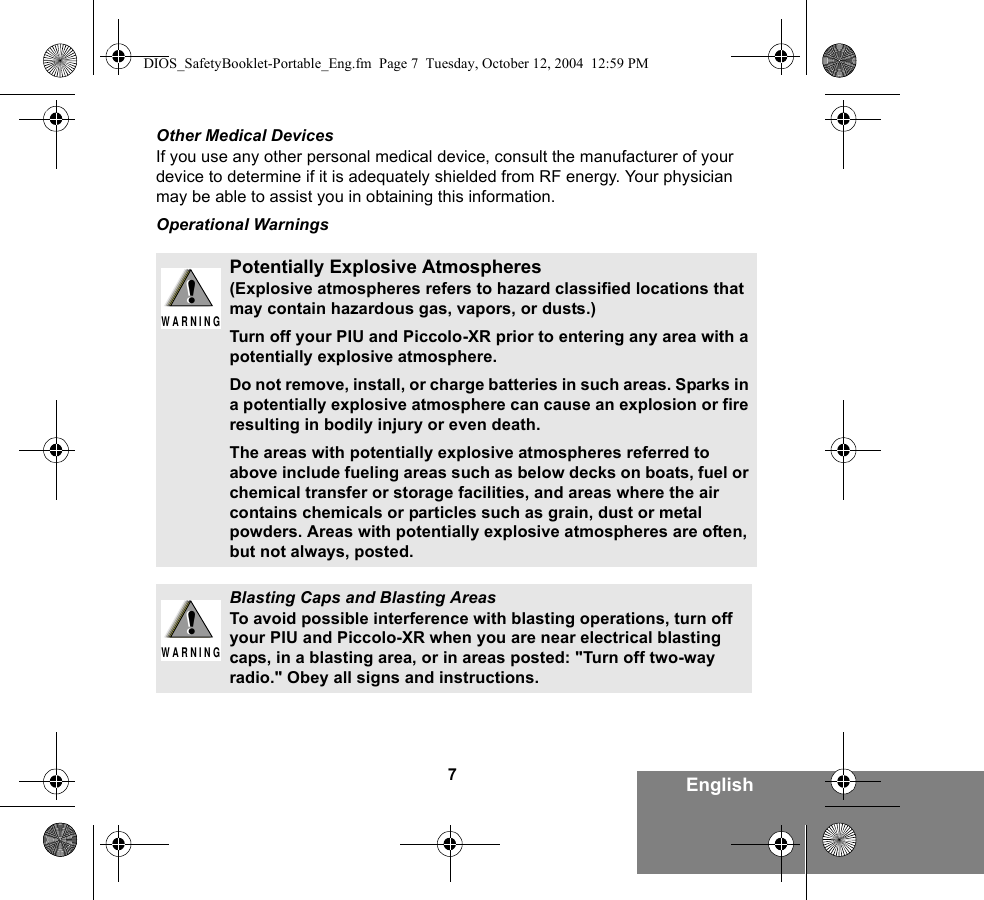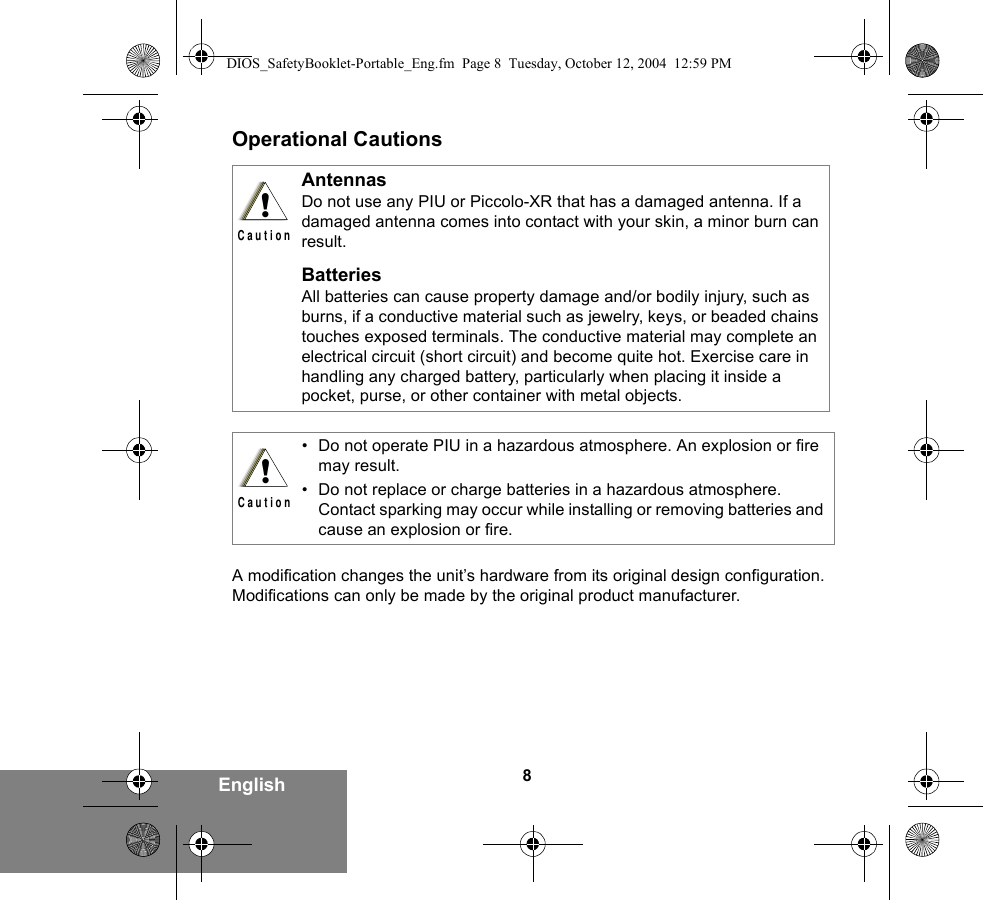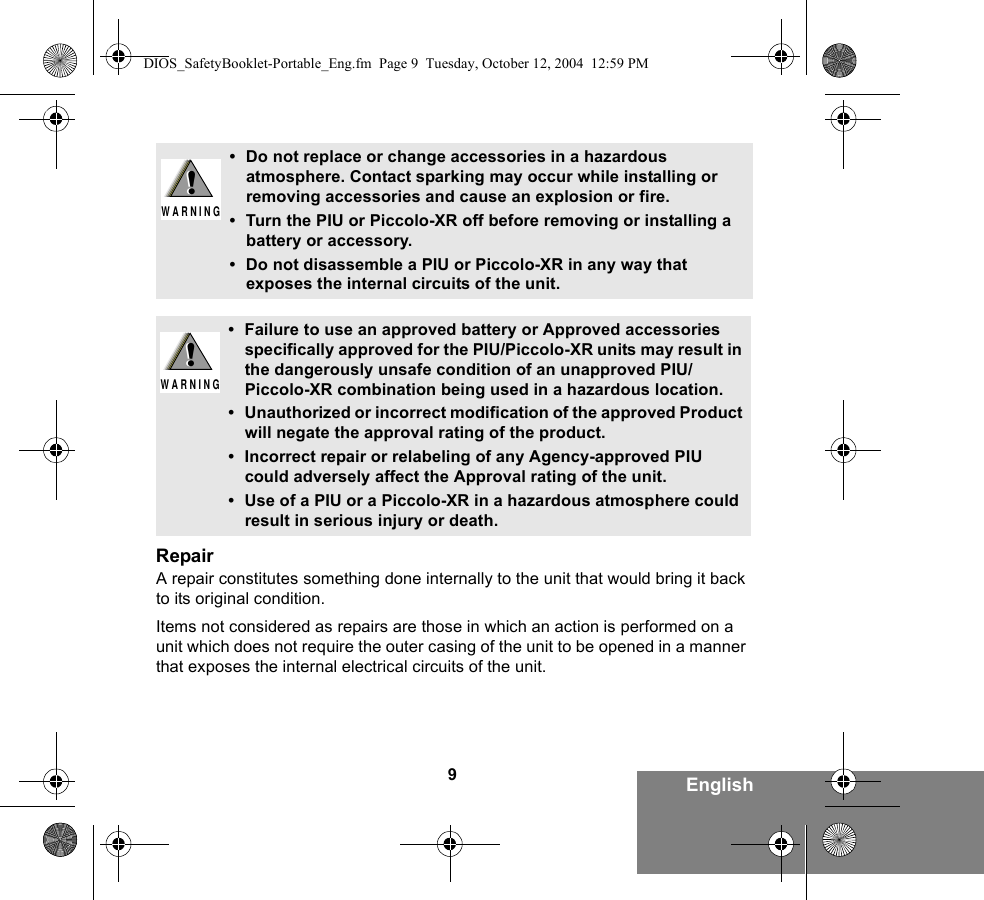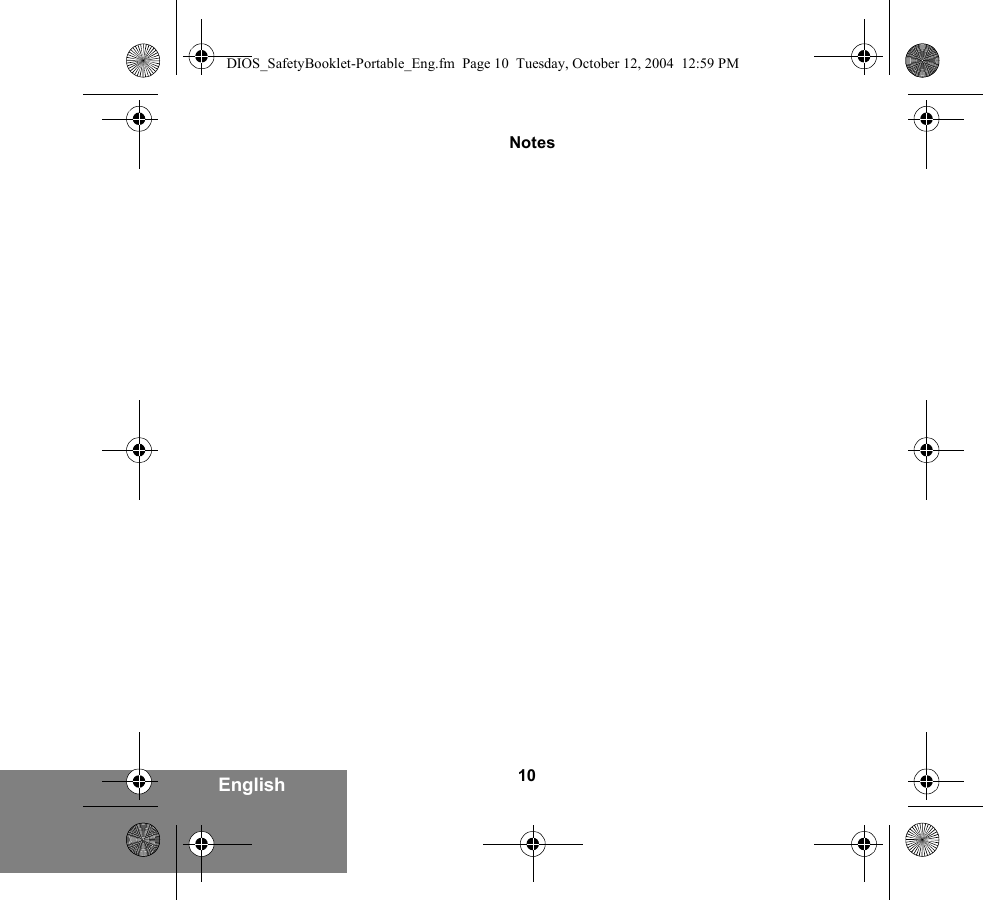Motorola Solutions 89FT4871 Distributed I/O System User Manual Product Safety and RF Exposure Booklet for PIU
Motorola Solutions, Inc. Distributed I/O System Product Safety and RF Exposure Booklet for PIU
Contents
- 1. Exhibit 8A Users Manual 1
- 2. Exhibit 8B Users Manual 2
Exhibit 8B Users Manual 2
